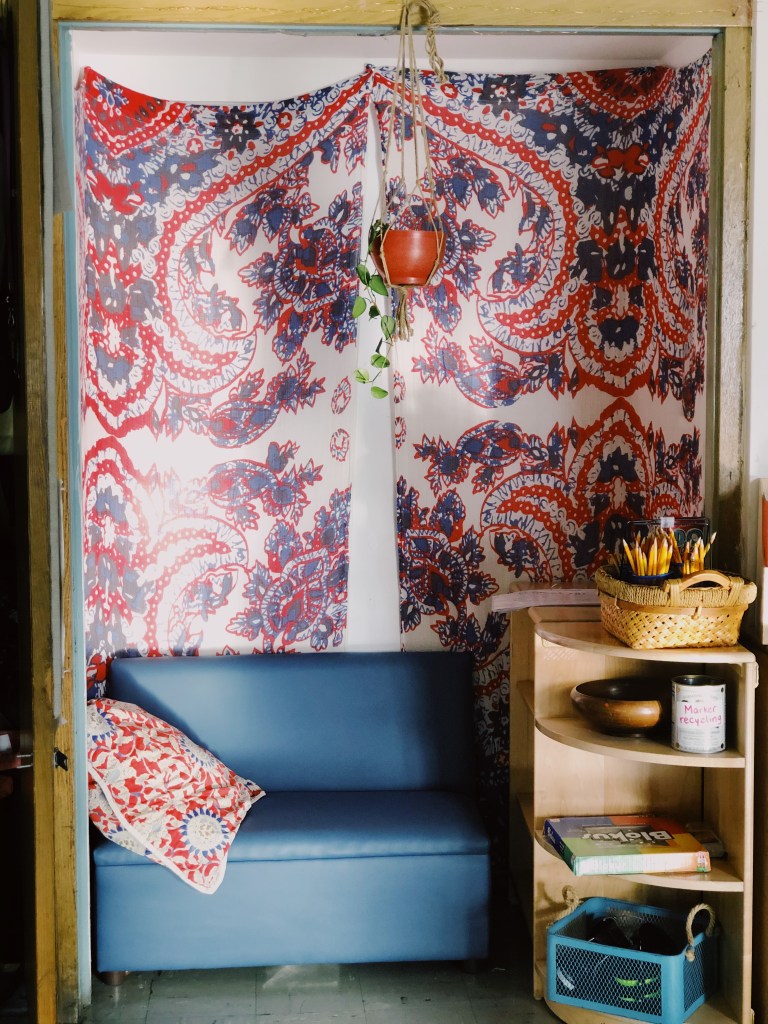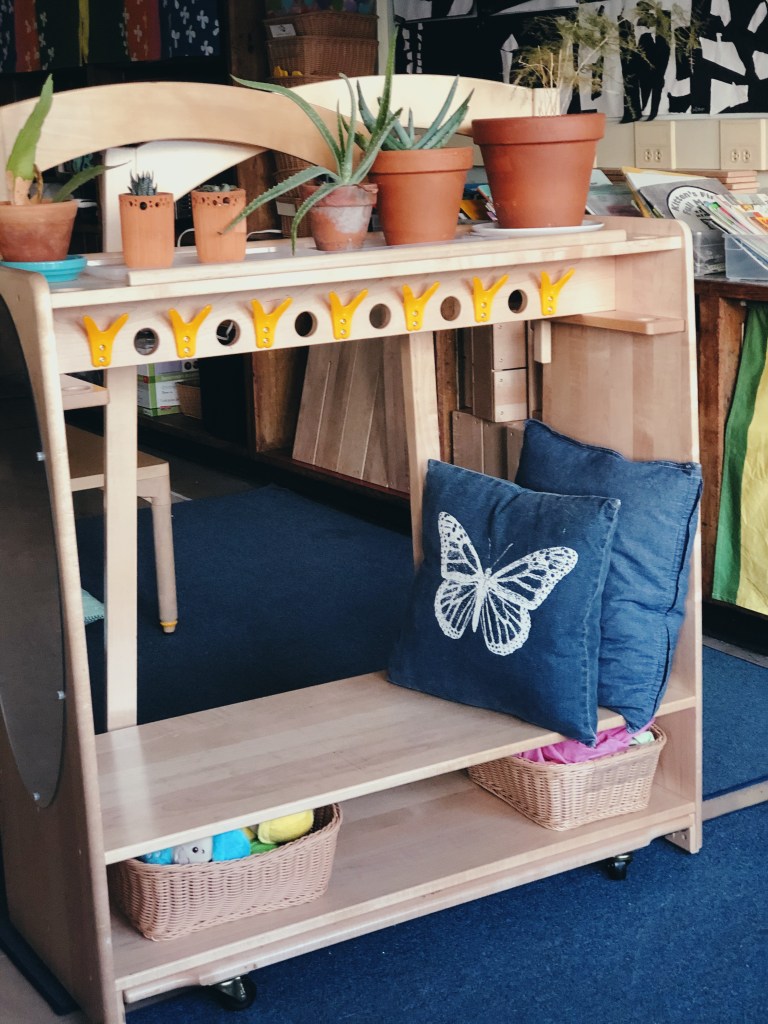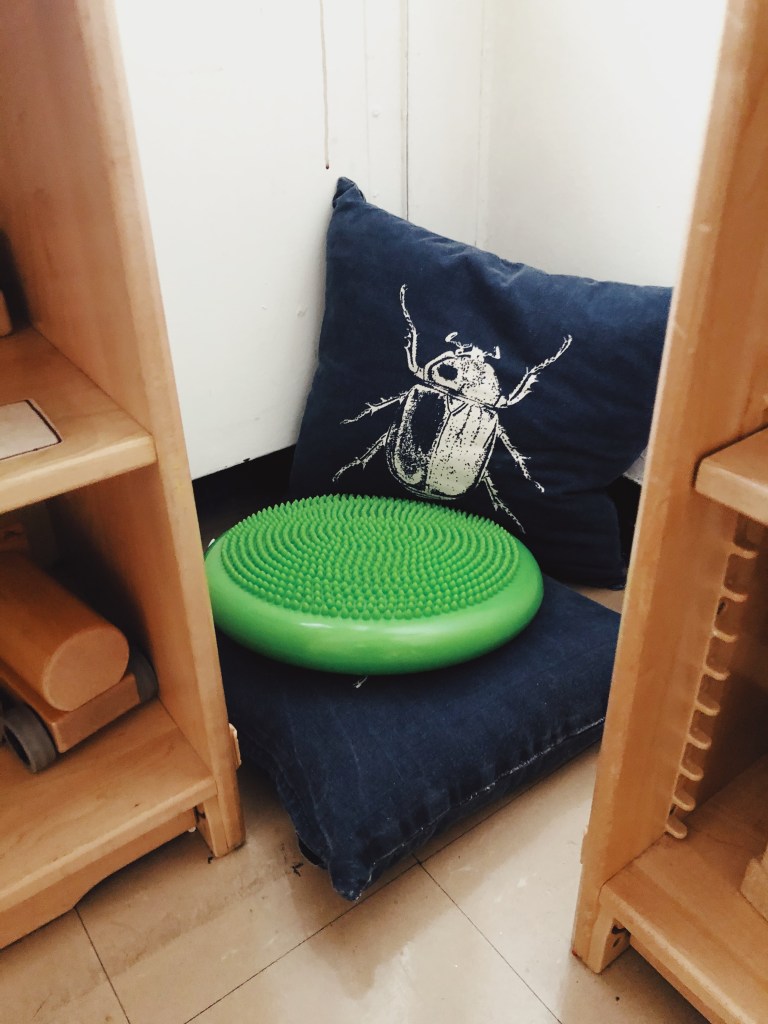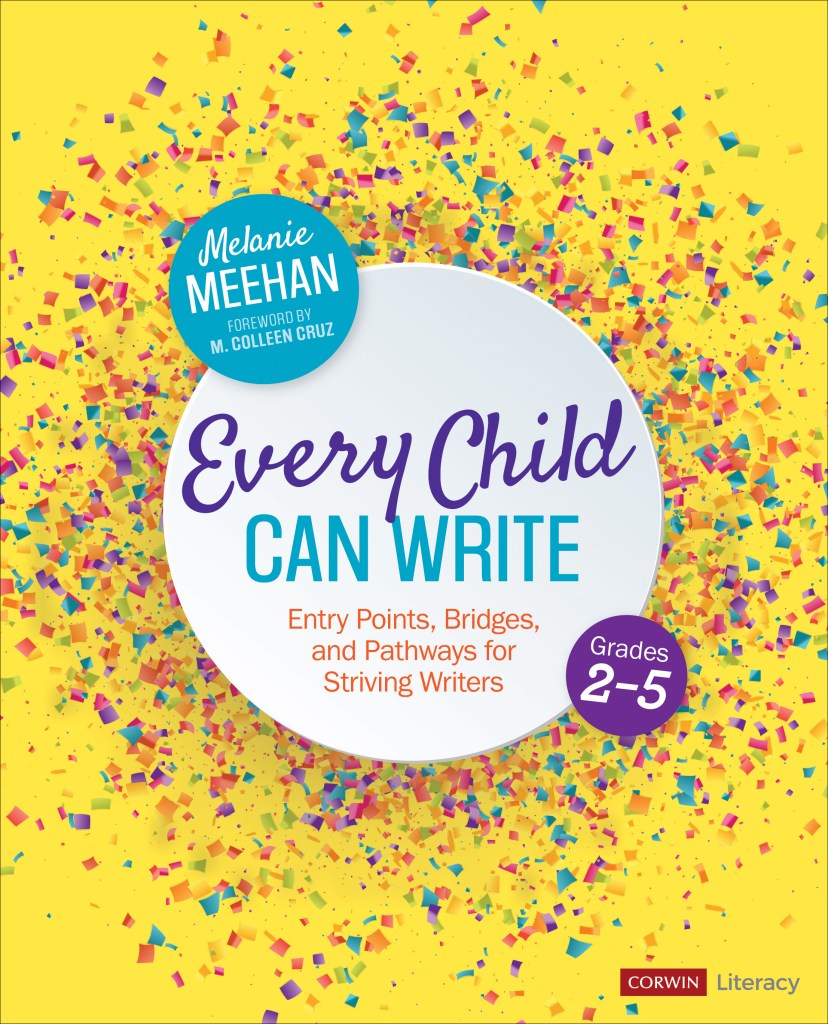
After a couple of years of teaching fifth grade in NYC, I came to understand the importance of having community work spaces and flexible seating for my students. I was lucky enough to have a principal who was willing to allocate some funds to buy new tables and chairs, as well as other necessities (e.g., storage space for each child’s writing materials, a writing center) to outfit the kind of writing workshop I envisioned for my classroom. I had several DonorsChoose proposals funded for a variety of writer’s notebooks, beanbags, benches, and a classroom rug. However, when I changed schools, the furniture didn’t come with me and I started over again. This time I found myself needing to make do with what I had or purchase what I wanted. I spent way too much money trying to get back the classroom I had in NYC. Years later, I came to realize that I probably could’ve thought a bit more creatively about how to use the space I had with the furniture I was given to create a variety of flexible work spaces in my classroom.
At the time, I believed I needed expensive flexible furniture from a glossy classroom supply catalog to make it work. Now that I’ve spent time in more schools as a literacy consultant, I’ve come to realize it’s possible to create an inviting space where children feel at-home and ready to write without spending $10,000 – $20,000. As educators, we cannot always afford to provide students everything we want to give them, but it’s important to find ways to give all kids what they need. It is possible to create a space with flexible options on a limited budget.
Let’s start with a quick look into the library area of a fourth-grade classroom:
I notice:
- White paint was applied to furniture to make it look uniform
- A plastic Adirondack chair with a pillow for student-use
- A low table (with extendable legs were removed) where individual students can write or a space where a small group of students can meet to discuss writing
- Baskets in the classroom library are covered cardboard boxes with labels created by students
- A single desk for a student who wishes to work independently
There are a variety of spaces in this one part of the classroom to help children find a work space that works well for them.
Moving down to third grade, here are some unique classroom features you might choose to incorporate to reach your writers:


Let’s move to Kindergarten where there are some unique ways to help students get what they need.



What about the kids who need more?
Some schools have occupational therapy rooms that are stocked with a variety of supplies that can be loaned to individual classrooms so that students can benefit from more specific tools that will help them focus. This kind of equity provides individual students with what they need without teachers needing to spend their own money to provide students with customized flexible seating options.
If your school has an OT or PT on staff, you might consider inviting them to do a whole-class lesson to help students make smart choices regarding fine motor and gross motor tools, as well as seating options. In some schools, OTs may visit a classroom to teach students how to try different pencil grips, seat cushions, fidgets, etc. This helps kids determine what may be helpful or distracting (i.e., too much fun).


….
Long gone are the days where all children should be expected to sit in a single place in the classroom. As educators, we cannot always afford to give students everything we want to give them, but it’s important to find ways to give all kids what they need. Not every child needs the same thing. Some students will get the support they need by laying prone on the floor with an inexpensive pillow while other children will need a sophisticated seat to help them eradicate their extra energy.
I will leave you with some advice about making sure all writers have the physical space they need to write from Melanie Meehan’s book, Every Child Can Write:
The striving writers I know need more physical space than most. As you observe your students at work, take inventory of how much space they are using and how much space they might need. For example, you may have striving writers who cram themselves into tiny spaces, yet you know real productivity requires some elbow room. Work with those students to find solutions they can be comfortable with: Perhaps instead of sitting in a reading nook to write, they sit at a desk with a cardboard divider that provides coziness but offers more room for paper and materials.
…..
For more on classroom seating, check out the following resources:
- Flexible Seating Options by Stacey Shubitz
- Off You Go, Find a Just-Right Spot by Kelsey Corter
- Revising the Classroom: Adventures in Flexible Seating by Kathleen Neagle Sokolowski
- Strategy Lesson and Conferring Coffee Table Area by Stacey Shubitz
- Welcome to Writing Workshop: Engaging Today’s Students with a Model that Works by Stacey Shubitz and Lynne R. Dorfman (See Chapter 2, which is about classroom environment.)
Credits: Many thanks to Vicky Chau, Kelsey Corter, Katie LeFrancois, Shawn McGibeny, Portia Senning, and Madeleine Zuck for sharing photos of their classrooms.
Giveaway Information:

- This giveaway is for a copy of Every Child Can Write by Melanie Meehan. Thanks to Corwin Publishers for donating a copy of each of these books — one book for a primary educator and one book for a secondary educator. (You must have a U.S. mailing address to win a print copy of this book.)
- For a chance to win this copy of Every Child Can Write, please leave a comment about this or any blog post in this blog series by Sunday, November 17th at 6:00 p.m. EST. Betsy Hubbard will use a random number generator to pick the winner’s commenter number. Their name will be announced in the ICYMI blog post for this series on Monday, November 20th.
- Please leave a valid e-mail address when you post your comment so Betsy can contact you to obtain your mailing address if you win. From there, our contact at Stenhouse will ship the book to you. (NOTE: Your e-mail address will not be published online if you leave it in the e-mail field only.)
- If you are the winner of the book, Betsy will email you with the subject line of TWO WRITING TEACHERS – EVERY CHILD CAN WRITE within five days of receipt. A new winner will be chosen if a response isn’t received within five days of the giveaway announcement.





The visuals are so helpful as to find thinking entry points. Ex: Deliberately creating “corners” instead of sliding bookshelves all the way into corners or repurposing closets or shelves PLUS all the links!
THANKS, Stacey!
LikeLike
I have a few things (e.g., coffee table, throw rugs, low cabinets) in my house, post-move, that I’m hoping to repurpose for a local teacher who wants to add some flexible seating to their classroom.
LikeLike
Please enter me into the giveaway is for a copy of Every Child Can Write by Melanie Meehan.
LikeLike
Lots of great ideas here. Thank you!
LikeLiked by 1 person
Thank you for all of the visuals and creative ways to provide cozy spaces for our writers. I especially enjoyed seeing 2 fourth grade classrooms displayed! It’s one thing to read about options, and as a visual person, quite another to see images supporting the ideas. This is a wonderful blog series!
LikeLike
Thanks for your kind words, Patricia! I am thrilled the visuals were useful.
LikeLike
I love the all the seating options.
LikeLiked by 1 person
Wow, this is great information about classroom spaces and flexible seating! Thank you for sharing this!
LikeLike
My pleasure! Thrilled that it’s useful, Joni.
LikeLike
I LOVE the “Sit With A Gathered Body” chart! I can’t wait to use it!
LikeLike
Isn’t that amazing! It provides options, which kids desperately need.
LikeLike
I, too, love that poster. I have a few options for flexible seating in my classroom but I am always looking for more ideas. I don’t know if this counts as flexible seating but I have a few every year who need to stand while working. It’s about observing your students and knowing who needs what.
LikeLike
That counts!
LikeLike
I love the idea of the Sitting With the Gathered Body poster. I needed some new ideas!
LikeLike
I hope this post was helpful with providing you with some new options. Check out the additional resources links at the bottom of the post.
LikeLike
What I miss most from a previous classroom is standing desk with kick bars. Still, I have created options- so important.
LikeLike
It’s hard to create one’s own options. I had to do it when I left NY. I remember bringing seat cushions from a golf tournament, an old coffee table from my previous apartment, etc.
LikeLike
Thank you for all of the photos. It’s important to see what a space can look like. Some of these spaces are just beautiful!
LikeLike
They really are. Lucky kids!
LikeLike